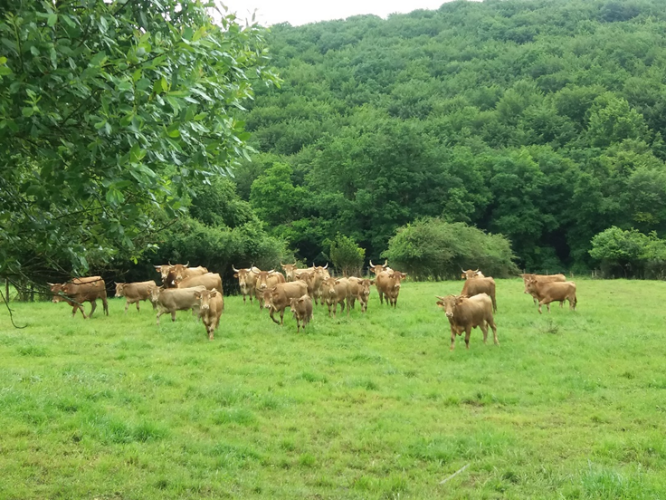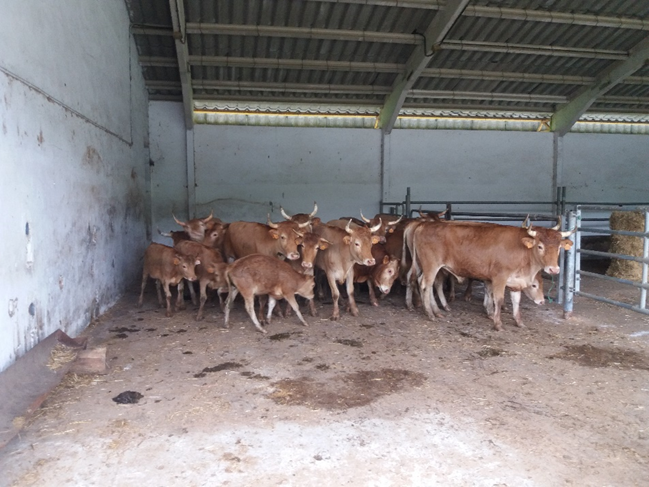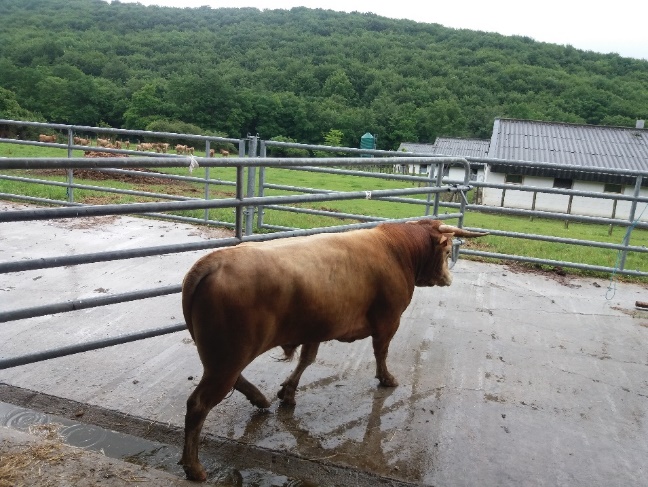Introduction to the challenge addressed
The Betizu is one of the most unique European cattle breeds, both from a genetic point of view and because it is a feral population, which is mainly found in Navarre, and is currently in danger of extinction. It should be noted that INTIA, by delegation of the Department of Agriculture of the Government of Navarre, is the main body responsible for maintaining the purity of the breed and, as far as possible, its dissemination. At present, the Betizu, without a clear current productive vocation, cannot compete on equal terms as a meat producer with other breeds. However, its behaviour in pasture areas where other breeds would not be able to survive means that INTIA considers that it has potential as a breed that produces meat of differentiated quality.
The farms that practice this model are small farms in mountain areas. In Navarre there are currently 457 females and 39 males registered on 21 farms in the north of the region. These animals are all the time outdoor and their wild nature makes them easily stressed, so it is necessary to find a fattening and finishing system that does not affect their animal welfare.
This is a demand from farmers which have this breed (Betizu) in an extensive system.
The greatest opportunity of this good practice has been to bring a beef to the market that is recognised for its ability to use the natural resources of the Betizu breed and to overcome the disadvantages of its high level of predisposition to stress.
Description of Innovation Consumers want to have "differentiated quality meat" on the market, which they associate with both the intrinsic quality of the product and the type of feed and animal welfare guarantees throughout the production cycle. In this context, INTIA is considering to find a competitive marketable product based on meat from castrated male Betizu cattle slaughtered at an age of less than 48 months and which is commercially known as "cebón" (fattening) and connected with high standards of health and welfare of animals.
The greatest opportunity of this good practice has been to bring to the market a beef of the Betizu breed that is recognised for its ability to use the natural resources and to overcome the disadvantages of its high level of predisposition to stress.
The development of the protocols and the validation of this fattening and finishing system were implemented in 2 years. At this moment each producer can do that in theirs farms.
Impact on farm performance
Equipment costs have not been high. The main investment is in the creation of good grassland with a mixture of grasses and legumes, and in the perimeter enclosure of the grassland. This new practice is just implemented on farms. The collection of data on animal welfare: health data, feeding, facilities, behaviour, etc., and on production efficiency and meat quality, allows us to know the degree of success of this practice and to establish improvement actions. In a first analysis it has been observed that these animals, very predisposed to stress, are giving good results in this management system. This management based on pasture improvement, supplementation in times of lower forage supply and the final finishing phase results in better daily gains and carcasses with a better fat cover. In addition, organoleptic tastings have shown a higher intramuscular fat content. More important than the economic value, we consider the value as social and environmental heritage, as it contributes to the maintenance of an endangered autochthonous breed from Navarre such as our Betizu and the maintenance of extensive livestock systems such as the Betizu farms which are contributing to maintain rural heritage and biodiversity.
|



